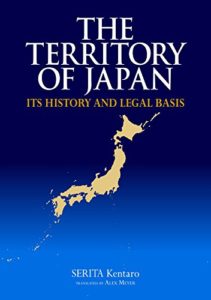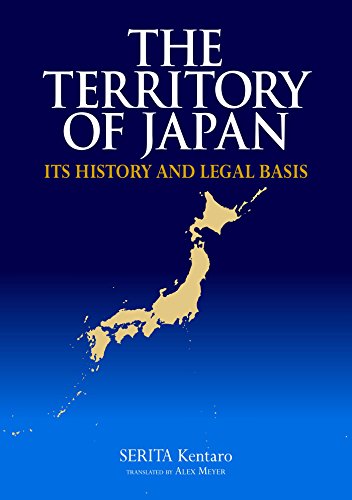Review by Chad Kohalyk
Japan’s three territorial disputes with neighbouring countries — the Northern Territories (Russia), Takeshima (Korea), and the Senkaku Islands (China) — all arose in the post-war period. The battle over them is being waged not by guns and butter, but through peaceful means in the courts of law. Less dangerous though this might be, it is no less complicated.
Eminent legal scholar Serita Kentaro’s book The Territory of Japan: Its History and Legal Basis (translated by Alex Meyer) puts aside the emotion of ownership as well as moralizing about historical wrongs to provide an incisive analysis of the legal status of these three territorial disputes. He describes the outcomes of war in sterile terms, through the dry perspective of legal documents in the form of treaties, declarations and protocols.
Serita has been writing on territorial issues since 1975, and his experience in this field includes a stint with the Ministry of Foreign Affairs in 1980. Years as a university professor give him the ability to navigate the reader through the legal complexities of these three disputes, building up a foundation of knowledge before complicating the issue with more detail. The initial overview chapter is a highly readable account of Japan’s disputed territories. Each successive chapter is dedicated to a specific region, where he will closely examine Soviet diplomatic letters, Chinese documents from the Ming and Qing eras, historical maps from China and Korea, and precedents from international legal cases. Furthermore he covers fishery zones and provides useful background on the evolution of demarcation in the post-war era and the Law of the Sea, describing how the rights of coastal states have changed, culminating in the concept of the Exclusive Economic Zone.
Each territorial dispute has its own complications, but a common challenge to all three is: How far back in time does one go? Over the generations some of these islands have changed hands a few times — some by force, others through peaceful trade. There is no “statute of limitations” for territorial expansion. Add to this the complexity of agreeing on shared definitions. For example, by making the concession that an island is merely a “rock,” and cannot be used for demarcating territory, one might throw into question islands of similar or smaller size in undisputed zones that were previously used to define wide swaths of territory. Thus a small concession in one region could have expansive consequences in another.
Serita is able to fairly deftly navigate the reader through these rocky issues, before presenting his own suggestion — a clever solution that could quickly end the disputes, if all sides could agree.
Released in 2018, this book is a translation of the 2010 update of Serita’s 2002 work, 日本の領土(Nihon no Ryōdo). It remains a highly valuable volume for gaining a strong foundation of these three disputes, and will be especially useful for scholars seeking background.
About the Author
Serita Kentaro was born in 1941 in former Manchuria. He graduated from the Faculty of Law at Kyoto University. He has served as Professor of International Law, Faculty of Law at Kobe University from 1981; Dean of the Graduate School of International Cooperation Studies at Kobe University from 1994; and Professor Emeritus at Kobe University from 2004. He was also formerly the Dean of the Law School at Aichi Gakuin University and President of Kyoto Notre Dame University. He is an expert in international law and international human rights law. In 2017, he received the Order of the Sacred Treasure, Gold Rays with Neck Ribbon for his academic achievements.


